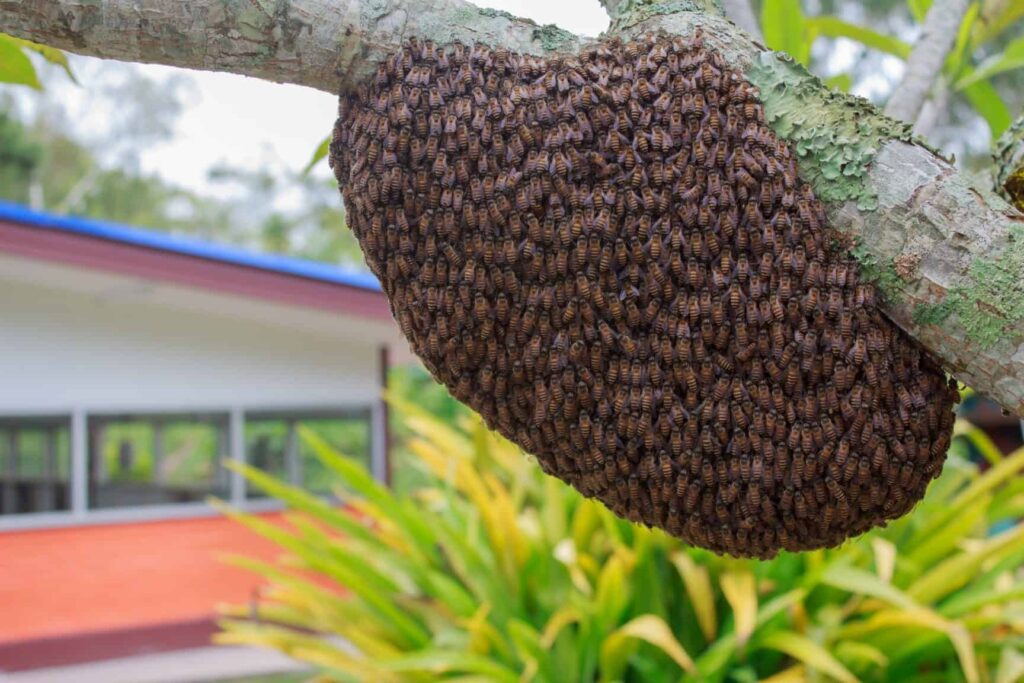What Is a Bee Swarm?
go.ncsu.edu/readext?927758
en Español / em Português
El inglés es el idioma de control de esta página. En la medida en que haya algún conflicto entre la traducción al inglés y la traducción, el inglés prevalece.
Al hacer clic en el enlace de traducción se activa un servicio de traducción gratuito para convertir la página al español. Al igual que con cualquier traducción por Internet, la conversión no es sensible al contexto y puede que no traduzca el texto en su significado original. NC State Extension no garantiza la exactitud del texto traducido. Por favor, tenga en cuenta que algunas aplicaciones y/o servicios pueden no funcionar como se espera cuando se traducen.
Português
Inglês é o idioma de controle desta página. Na medida que haja algum conflito entre o texto original em Inglês e a tradução, o Inglês prevalece.
Ao clicar no link de tradução, um serviço gratuito de tradução será ativado para converter a página para o Português. Como em qualquer tradução pela internet, a conversão não é sensivel ao contexto e pode não ocorrer a tradução para o significado orginal. O serviço de Extensão da Carolina do Norte (NC State Extension) não garante a exatidão do texto traduzido. Por favor, observe que algumas funções ou serviços podem não funcionar como esperado após a tradução.
English
English is the controlling language of this page. To the extent there is any conflict between the English text and the translation, English controls.
Clicking on the translation link activates a free translation service to convert the page to Spanish. As with any Internet translation, the conversion is not context-sensitive and may not translate the text to its original meaning. NC State Extension does not guarantee the accuracy of the translated text. Please note that some applications and/or services may not function as expected when translated.
Collapse ▲I have already gotten some reports and calls about bee swarms being seen in the area this year. Why do honey bees swarm? Honey bees swarm in the spring and early summer when their population increases rapidly and conditions inside the hive become too crowded. The queen will leave the hive with about half of the worker bees and some male drones to look for a new place to build a hive. A new queen is made in the old hive and the group of bees that has left the hive is called a swarm.
The swarm will typically land near the old hive on a tree, fence post, or other surface. A typical honey bee swarm consists of between 10,000 and 40,000 bees. A basketball sized clump of bees may look intimidating, but is not a concern for Public Health or safety. The swarm of bees will stay put for a few hours up to a few days while scout bees search for a new home. Most of the swarm remains largely inactive to conserve energy.
Once a good enough site has been found and decided upon by the colony, the entire swarm of bees will take to the air and move off to their new home. Once inside the new home, worker bees go to work building new combs for the queen to lay eggs and, for foraging bees, a place to store honey for the colony.
So, what should you do if you see a swarm on your property? One option is to leave them alone. If they are not trying to form a new colony in your house and are not in the way they will go away within a few hours to a day or two. Another option is to call the extension office and we can see if one of our local bee keepers is able to come and collect the swarm.




